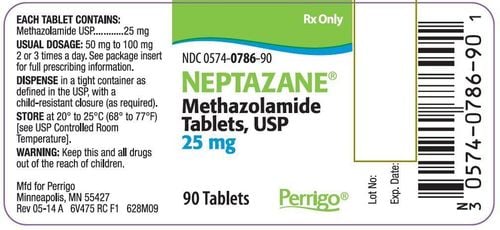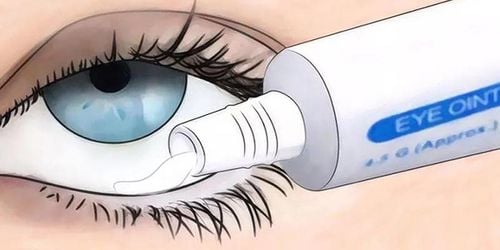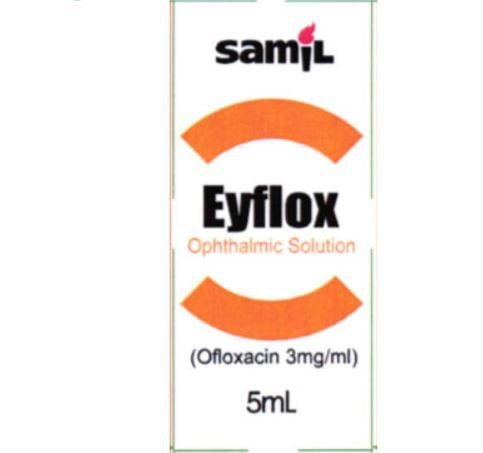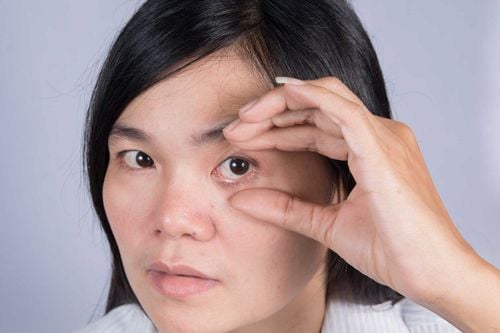This is an automatically translated article.
Cataracts are also known as dry cataracts, cataracts, cataracts, cataracts... The disease is common in people over 50 years of age, but cataracts in young people can still occur and latent. There are many risks leading to blindness, greatly affecting the quality of life of patients. So is cataract dangerous and how to prevent?
1. What is cataract? The lens is a structure in the eye that functions like a convex lens to help focus light onto the retina, from where the retina perceives light and sends signals to the brain. In a normal eye, light that passes through the lens is focused on the retina, so the lens needs to be transparent to create the clearest image. It can be seen that the focusing power of the lens plays an extremely important role in the refractive system of the eye, helping to focus the image at the correct position on the retina when we look far away. Along with that, the thickness of the lens will assist in adjusting the eyes to clearly see near objects.
The lens component is mainly composed of water and proteins, in which the proteins are arranged in a certain order so that light can pass through and focus on the retina. In case the protein is not arranged in the correct order, it is concentrated in clusters, leading to the scattered light and creating opaque areas in the lens. As a result, it blocks light from reaching the retina and causes vision loss. This abnormal condition is called cataract.
Early cataracts may not show any symptoms because only a small part of the lens is cloudy. However, over time, the degree of opacity of the lens gradually increases and the patient's vision will decrease because the amount of light focused on the retina is no longer as it should be. This is a non-communicable disease despite the fact that many cases of cataracts are recorded in one eye and gradually progress to the other eye.
In terms of the cause of the disease, now scientists are still doing more research because there are still many unknown mechanisms. Scientists think that favorable risk factors for cataracts may include smoking habits, living in too much sun or being related to diabetes ...
Opacity can occur in different layers of the crystalline lens, including: the central nucleus, the posterior subcapsular or the cortical...

Đục thủy tinh thể còn gọi là cườm khô, cườm đá, cườm hạt, đục nhân mắt...
2. Signs of Cataract Cataracts can include the following symptoms:
Blurred vision or impaired vision; When looking at light, there is a feeling of glare: Seeing car lights too bright at night, dazzling when looking at lights or strong sunlight or seeing halos around lights...; Colors appear lighter than usual; Night vision is worse than daytime; Double vision, when looking at one image, it becomes 2 or more images; Change the lenses you are wearing on a regular basis. However, vision-related symptoms may not be specific to cataracts and may be related to many other eye conditions. Therefore, if the patient notices the above abnormal signs, they should see an ophthalmologist for examination, advice and accurate diagnosis.
One thing to pay special attention to is that the cataract stage is small, the patient may not realize the changes of vision. However, as the degree of opacity further progresses without intervention, vision rapidly declines. Some people with cataracts also report that their vision is better up close or when reading, but it's only temporary, and vision declines as the cataract develops into a later stage.
3. Cataract classification 3.1. According to morphology and location Cataract: Cataract in the nucleus occurs when the central area of the vitreous cleavage hardens and turns yellow beyond the normal level. In the early stages, these two factors cause some changes in light refraction and impaired distance vision. This condition may occur in only one eye; Cataract: The opaque part of the vitreous shell, which may gradually enlarge, or many opacities combine and cause more cataracts. Especially when the whole shell and nucleus are opaque (complete cataract) is called mature opacity. Cataracts can occur in both eyes and are often asymmetrical; Capillary opacity: A small opacity in the epithelium and anterior capsule of the vitreous but does not affect the cortex. 3.2. Causes of cataract Primary causes:
Cataracts due to aging: The majority of cataract patients are elderly. According to statistics, up to 80% of people over 65 years old have cataracts; Congenital Cataract: This can be the cause of cataracts in young people, related to genetic disorders or complications of systemic diseases or metabolic disorders. Secondary causes:
Regular direct exposure (more than 3 hours/day) to blue light from electronic equipment screens, X-rays...; Some other eye diseases such as conjunctivitis, corneal disease... are not treated properly or recur many times; Regularly expose your eyes to sunlight; Side effects of some treatment drugs such as corticosteroids, antidepressants, ..; Degenerative myopia; Cerebrovascular accident, eye injury or sequelae after eye surgery; Having chronic diseases such as diabetes, high blood pressure or obesity...

Bệnh đục thủy tinh thể có thể bao gồm những triệu chứng như nhìn mờ hay suy giảm thị lực
4. Diagnosing cataracts To detect cataracts early, patients need to have a comprehensive eye exam, including the following steps:
Visual acuity measurement with a vision table; Eye exam with pupil dilation using eye drops. This allows the doctor to examine both the vitreous and the retina to check for all eye conditions; Examining the eye with a microscope to magnify the frontal structures of the eye, helping the doctor detect abnormalities inside the eye; Intraocular pressure measurement: Indicated routinely for the purpose of checking intraocular pressure, elevated intraocular pressure may be a sign of abnormal pathology.
5. Prevention of cataracts Have regular eye exams or check them immediately when there are abnormal signs (such as eye pain, eye fatigue, decreased vision, blurred, dry or burning eyes...) to early detection and intervention of abnormal pathologies, including cataracts; Take measures to treat and control systemic diseases, chronic diseases such as diabetes, hypertension... while maintaining ideal weight, avoiding overweight and obesity; Build a scientific and healthy diet, increase the intake of foods rich in antioxidants, vitamins A, C, E, Lutein, zinc Zeaxanthin such as green vegetables, fruits, fish, whole grains ... At the same time, limit foods that are harmful to the eyes such as fried foods, containing a lot of fat, candies and sweets...; Increase lighting indoors or in enclosed environments, avoid direct sunlight exposure, wear glasses or eye protection when outdoors; Equip specialized eye protection equipment according to the specific work; Stay away from risk factors that damage the lens health such as alcohol, tobacco smoke. Cataracts impair vision and increase the risk of complications, affecting eye health. Diseases can be prevented by regular checkups, healthy diet and lifestyle.
Follow Vinmec International General Hospital website to get more health, nutrition and beauty information to protect the health of yourself and your loved ones in your family.
Please dial HOTLINE for more information or register for an appointment HERE. Download MyVinmec app to make appointments faster and to manage your bookings easily.













